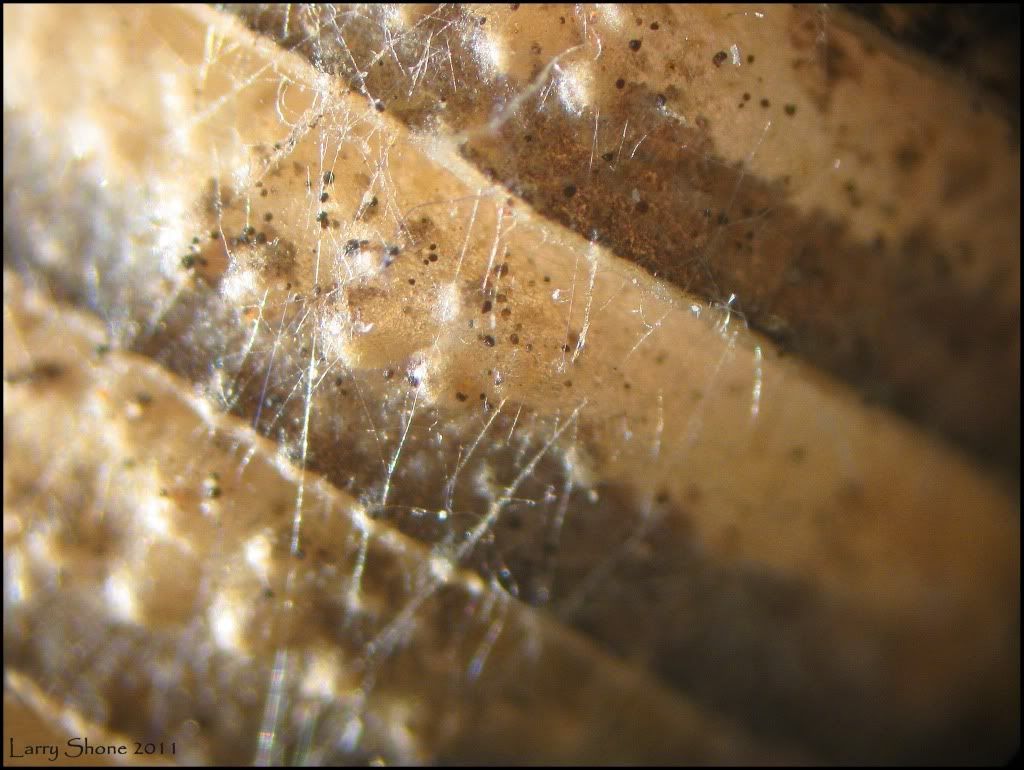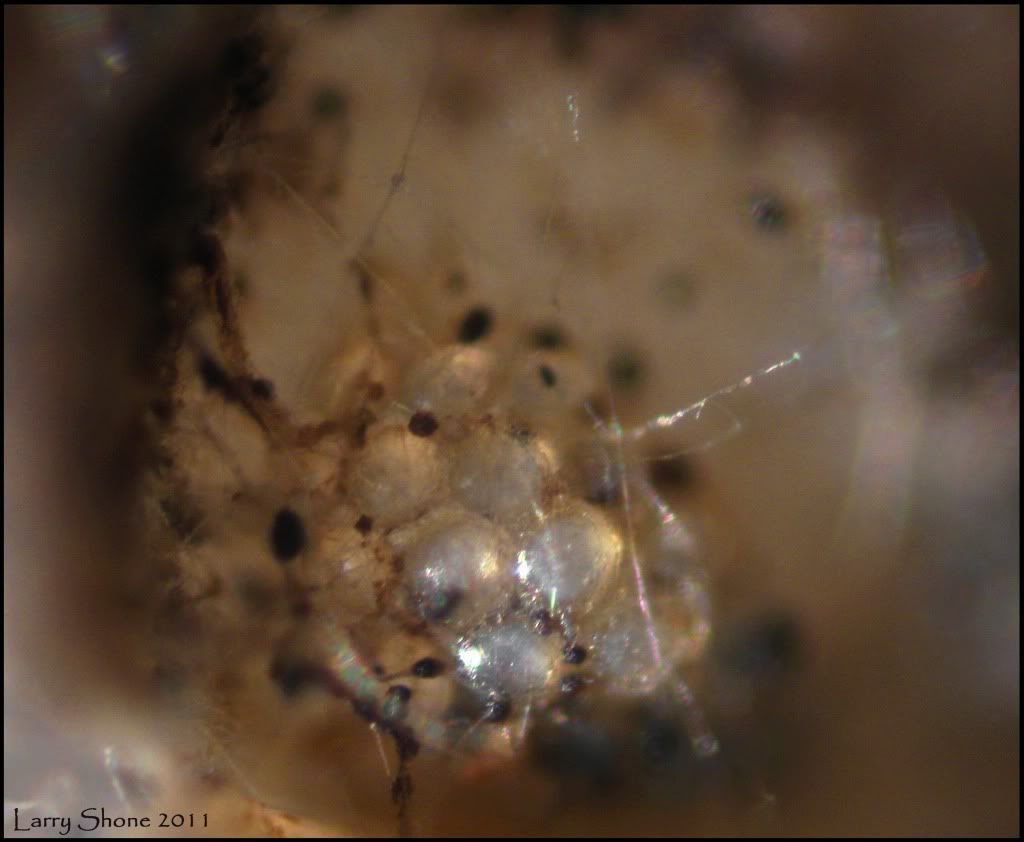I really wanted to get a shot of a woodlouse eyefield under the microscope, but to do so I would need a dead woodlouse. Unfortunately by the time I've put the kids to bed, its dark and cold out in the garden and I could only find one sad dried up old husk tied up in spider web in the shed!
Nonetheless I had a go...
I'm using a desk lamp with 40W tungsten bulb which gets ruddy hot-I need to source a flourescent bulb with a small screw in fitting and adjust WB accordingly.
First the carapace at 40X. The black dots are I believe faeces from whatever has fed on it.

And then the eyefield, at 200X approx (10X eyepiece,20x objective, camera zoomed in past the black circle, then cropped somewhat in PS)

Canon 5D and 30D | Canon IXUS 265HS | Cosina 100mm f3.5 macro | EF 75-300 f4.5-5.6 USM III | EF 50 f1.8 II | Slik 88 tripod | Apex Practicioner monocular microscope


